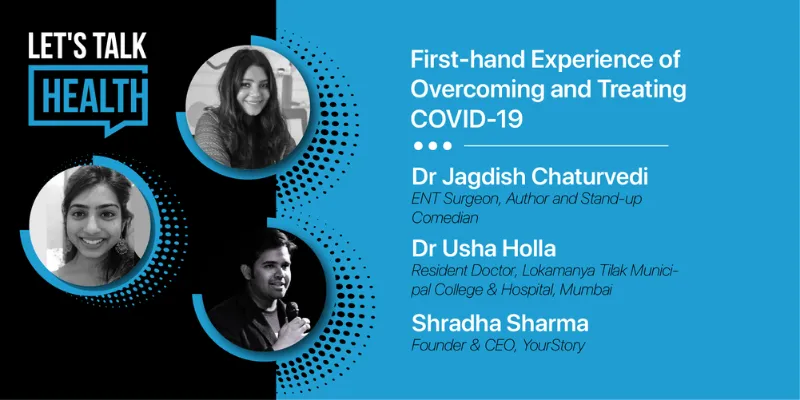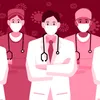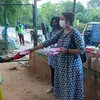‘COVID-19 is deceptive, the risk re-infection is high,’ says Dr Usha Holla who recovered from coronavirus
In a conversation with Shradha Sharma, CEO and Founder of YourStory, and Dr Jagdish Chaturvedi, a Bengaluru-based ENT surgeon, Dr Usha Holla talks about what it is like to treat people infected with COVID-19, the nature of the virus and the role of empathy in providing medical aid.

Dr Usha Holla, resident doctor at Lokamanya Tilak Municipal Medical College and Hospital, Mumbai.
Ever since the coronavirus outbreak began spreading from China to the rest of the world, it has sparked a string of urgent conversations concerning public health, safety precautions, as well as the social and economic impact of the pandemic. However, many questions still need to be answered.
At what rate does the virus mutate? How does it affect different people dissimilarly? What are the methods employed by hospitals to deal with the surge? Which are some of the medications being administered? To what extent are frontline health workers affected?
To obtain insights into these aspects, Shradha Sharma, CEO and Founder, YourStory and Dr Jagdish Chaturvedi, a Bengaluru-based ENT surgeon, talked to Dr Usha Holla, who completed her MD in General Medicine and is presently working as a resident doctor at the Lokamanya Tilak Municipal Medical College and Hospital in Mumbai.
Mumbai is known to be one of the worst-hit cities in terms of COVID-9 cases. On July 20, 2020, the number of positive cases in the metropolitan city surpassed the one lakh-mark to touch 100,350. With emergency wards filling up and health care units constantly pooling together resources to tend to patients, doctors, and nurses are also not hesitating to put themselves in harm’s way.
Dr Usha was one among them. Armed with a PPE kit, she has been doing rounds of the COVID wards ever since the onset of the pandemic.
She has been treating coronavirus patients for the last three months. Recently, she got infected with the virus. Nonetheless, she fought the virus and managed to recover, only to get back on duty.
“We were overwhelmed to see the sheer number of patients lining up during the initial days of the outbreak. This ranged between 1,000 and 2,000 individuals every day. There were hardly any vacant beds, and even the deceased could not be cleared out on time. But now, the administration has opened wards in the hospital and the situation is better. That said, all the members of my department are continuing to work five times more than usual,” says Dr Usha.
Best practices adopted by the hospital
With the number of COVID-19 cases rising rapidly on a daily basis, hospitals across the country are facing a huge strain on their healthcare infrastructure. From dealing with a crunch in the number of beds, especially in intensive care units, to ensuring regular sanitisation and implementation of safety precautions, a slew of challenges have popped up along the way.
According to The Center For Disease Dynamics, Economics and Policy, India has roughly 1.9 million hospital beds, 95,000 ICU beds, and 48,000 ventilators. Presently, they are all being utilised in an attempt to contain the pandemic.
When asked by Dr Jagdish about the steps being taken by the hospital, Dr Usha replies,
“Individuals who approach the hospital with mild symptoms are simply advised to quarantine themselves at home for 15 days. If their oxygen levels drop way below 95 percent, and if we spot too many changes in the X-Ray, we ask them to get admitted either at the isolation ward in the hospital itself or at the Bandra Kurla Complex (BKC) COVID facility.”
Watch the full interview here:
Scientists and researchers suggest that coronavirus can re-infect people and Usha too reinforced this.
“A senior colleague of mine was tested positive for the second time and two of the patients I have seen faced the same scenario,” she notes.
It has been months since the outbreak of coronavirus, and many medicines and supportive care measures are being used to ease symptoms such as fever, cough, and cold. Some of these are Hydroxychloroquine (HCQ), Itolizumab, Steroids, Heparin, and convalescent plasma therapy. Citing her experience, Dr Usha says,
“Every individual infected with the virus tends to develop different symptoms. And, depending on the intensity and type of signs, a few of the common drugs that have worked well are steroids, heparin and tocilizumab, and HCQ to a certain extent. Besides this, the use of high flow nasal cannula has provided relief to many suffering from respiratory problems.”
The COVID-19 experience
Thousands of healthcare workers are risking their own lives to save people from the pandemic. The data from the National COVID Registry revealed that around 1,302 doctors had contracted coronavirus, and 93 of them had lost their lives because of it.
Dr Usha recalls her experience of being tested positive and spending time in isolation.
“It started with a slight cold and regular temperature spikes, and later, it worsened. So, I got admitted to the hospital and stayed on for 16 days. It is difficult to spend time all alone during the period without family and friends by the side. But, luckily mine stood by me. My mother cried for almost a week when she got to know I was infected,” she relays.

Whether it is treating coronavirus, or another ailment, both empathy and compassion play a crucial role in defining patient experiences. Both Dr Usha and Dr Jagdish attest to it.
“When one is a doctor or a medical professional, there is always an ethical code of conduct to stick by. However, that should not come in the way of them showing empathy,” notes Dr Jagdish.
Dr Usha, on the other hand, remembers an incident during which she experienced an outpour of benevolence.
“A 19-year-old boy came to me after being turned down by 10 hospitals. He was suffering from tuberculosis, and his BP and blood sugar was very low. If I would not have given him the two injections on time, he would have probably lost his life. That incident changed some of my perceptions and enabled me to be more empathetic,” she illustrates.
Both the doctors, who felt that India was doing fairly well in terms of treating and containing the virus, reiterated the importance of wearing masks and adhering to all the safety measures.
Edited by Kanishk Singh








